- The Importance of Cosmetics GMP Compliance
- Maintaining Cosmetics Microbiology for Safety
- Advancements in Cosmetic Engineering and Testing
- Validating Cosmetic Prototypes for Efficacy
- Assessing Cosmetics Safety through CPSP Reports
- Alternatives to Animal Testing in Cosmetics
- Exploring In Vitro Testing for Cosmetics
- How Can Cosmetic Business Solutions Help Ensure the Success of Cosmetic Testing?
- How Does ISO 22716 Compliance Affect the Cosmetics Testing Process?
- Is Cosmetics Testing Necessary in the Formulation Process?
- Why Is the CPSR Considered Essential for Cosmetics Testing?
- What Is Involved in Dermatological Testing for Cosmetics?
- Are Pet Test Cosmetics Harmful to Animals?
- What is the Purpose of the Cosmetics Challenge Test ISO 11930?
- The Importance of Toxicology Testing in Cosmetics
Cosmetics testing is an essential aspect of the beauty industry that ensures the safety, quality, and efficacy of beauty products. Cosmetics undergo rigorous testing to ensure that they are safe for consumer use and comply with regulatory requirements.
Testing ensures that cosmetics are free of harmful ingredients that can cause adverse effects on the skin or body. It also helps to determine the shelf life and effectiveness of cosmetic products, which ensures that they remain stable and perform as intended over time.

Without cosmetics testing, consumers would be exposed to potential harm and the cosmetics industry would lack the credibility and trust that is essential for its success. In this article, we will explore the various processes involved in cosmetics testing, as well as the importance of complying with regulatory requirements and utilizing advanced testing methods.
- Cosmetics testing is essential for ensuring the safety, quality, and efficacy of beauty products.
- Testing helps to identify potentially harmful ingredients and ensure that cosmetic products remain stable and effective over time.
- Complying with regulatory requirements and utilizing advanced testing methods are essential for maintaining the credibility and trust of the cosmetics industry.
The Importance of Cosmetics GMP Compliance
Cosmetics Good Manufacturing Practices, commonly known as GMP, are a set of guidelines that define the processes involved in the production and testing of cosmetic products. Adhering to GMP guidelines ensures that cosmetics are consistently produced and controlled according to quality standards.
The US Food and Drug Administration (FDA) has established regulations related to GMP compliance for cosmetics, which are designed to ensure that cosmetic products are safe for consumer use and meet quality standards. Failure to comply with GMP regulations can lead to serious consequences, including regulatory action, product recalls, and damage to brand reputation.
GMP compliance involves several key processes, including raw material selection, equipment calibration, documentation of procedures, and testing for impurities, among others. By implementing GMP guidelines, cosmetics manufacturers can ensure that their products are safe, effective, and of high quality.
| Benefits of GMP Compliance for Cosmetics Manufacturers: | |
|---|---|
| Consistent Product Quality: | Following GMP guidelines can help ensure that cosmetic products are consistently produced to meet predetermined quality standards. |
| Consumer Safety: | GMP compliance helps minimize the risk of contamination, ensuring that cosmetic products are safe for consumer use. |
| Regulatory Compliance: | Complying with GMP regulations helps ensure that cosmetic products meet all relevant regulatory requirements, avoiding potential fines or penalties. |
| Stronger Brand Reputation: | GMP compliance can help build trust in a brand’s products by demonstrating a commitment to quality and safety. |
Overall, GMP compliance is critically important in the cosmetics industry, as it ensures that consumer safety and product quality remain top priorities. By following GMP guidelines, cosmetics manufacturers can minimize the risk of regulatory action and product recalls, while ensuring continued innovation and success in the industry.
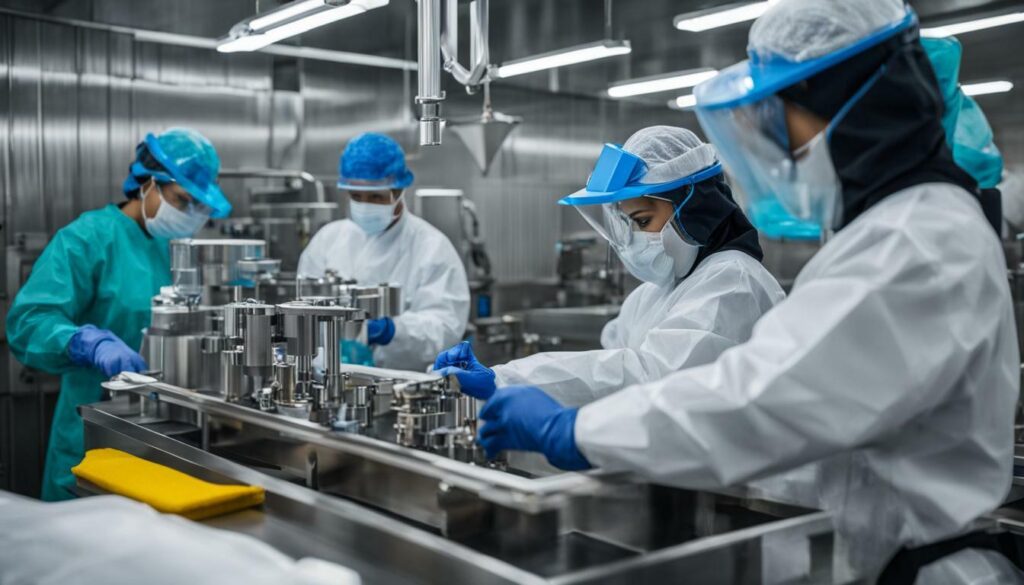
Cosmetic stability testing is a crucial aspect of the production process, ensuring that products maintain their desired quality throughout their shelf life. Stability testing is particularly important for cosmetics, as they frequently contain a range of ingredients that can interact with one another and potentially compromise the product’s efficacy.
During stability testing, cosmetics are subjected to a range of conditions that simulate real-world use, including exposure to light, heat, and humidity. By analyzing the chemical and physical changes to the product over time, manufacturers can determine the expected shelf life and identify any potential issues that may arise.
The stability of a cosmetic product can be affected by a range of factors, including the formulation, packaging, and storage conditions. Stability tests should be conducted on finished cosmetic products, as well as individual ingredients, to ensure that they are compatible and do not degrade over time.
| Factors Affecting Cosmetic Stability | Testing Methods |
|---|---|
| Formulation | Accelerated Stability Testing |
| Packaging | Real-Time Stability Testing |
| Storage Conditions | Compatibility Testing |
Accelerated stability testing involves subjecting products to a range of harsh conditions for an extended period, allowing manufacturers to predict how the product will perform over time. Real-time stability testing involves storing products under normal conditions and monitoring them over time to determine their shelf life.

By conducting stability testing, cosmetics manufacturers can ensure that their products are safe and effective for consumers to use throughout their shelf life. This testing process is an important part of quality control and helps to maintain the reputation of cosmetic brands.
Maintaining Cosmetics Microbiology for Safety
Microbiological testing is a critical component of cosmetics testing, as it helps ensure the safety of cosmetic products. Testing for microbial contamination helps prevent the growth of harmful bacteria, fungi, and other microorganisms that can cause adverse effects on consumers. Cosmetic microbiology also evaluates the preservation systems used in cosmetics to ensure they are effective in preventing contamination and prolonging the shelf life of products.
To test for microbial contaminants, cosmetic microbiologists use various methods such as culture-based testing, which involves growing samples on agar plates, and molecular-based testing, which uses genetic analysis to identify microbes. These testing methods help determine the number and types of microorganisms in a product, allowing manufacturers to assess the risk they pose to consumers.
Microbiological testing is especially important for cosmetics that are applied to the skin or mucous membranes, as these areas provide optimal conditions for bacteria and fungi to grow. The eyes and lips are particularly susceptible to contamination, and testing for pathogens such as staphylococcus aureus, pseudomonas aeruginosa, and candida albicans is crucial in ensuring the safety of eye and lip products.
Additionally, cosmetic microbiology evaluates the effectiveness of antimicrobial preservatives used in cosmetic products. These preservatives help prevent microbial growth and ensure the safety and quality of cosmetic products throughout their shelf life. Preservatives such as parabens, phenoxyethanol, and sodium benzoate are commonly used, and their effectiveness is regularly tested to ensure they are providing adequate protection against microbial contamination.
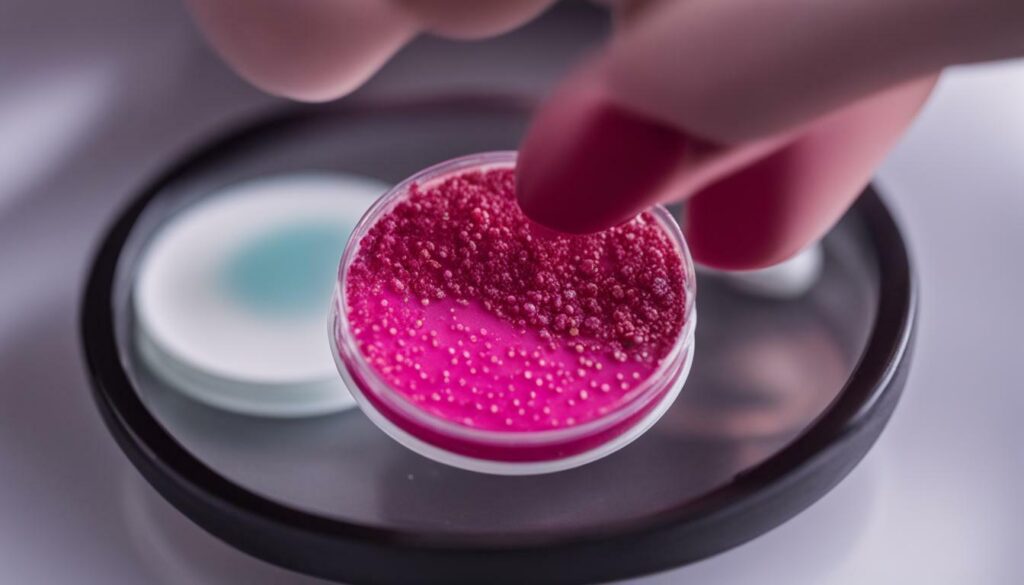
Overall, cosmetics microbiology is an integral part of cosmetics testing, providing valuable insight into the safety and quality of cosmetic products. By utilizing advanced testing methods and staying up to date with regulatory requirements, cosmetic manufacturers can continue to prioritize consumer safety and well-being.
Advancements in Cosmetic Engineering and Testing
The cosmetics industry is constantly evolving, and with the help of cosmetic engineering and testing, it continues to innovate and improve the safety, quality, and efficacy of beauty products. Cosmetic engineering involves the use of advanced technologies and processes to develop and optimize cosmetic products, while cosmetic testing helps evaluate their performance and safety. These advancements have revolutionized the cosmetics industry, enabling manufacturers to create products that meet the needs and preferences of today’s consumers.
Cosmetic engineering plays a critical role in product development, helping manufacturers formulate and optimize cosmetic products. By utilizing advanced technologies such as 3D printing and computer simulation, engineers can create prototypes and test their performance in a virtual environment before moving to actual production. This process allows for faster and more efficient product development, reducing costs and time-to-market.

Meanwhile, cosmetic testing labs play a significant role in evaluating the safety and efficacy of cosmetic products. These labs utilize advanced testing methods such as in vitro and non-animal testing to assess the performance and safety of cosmetic products. By adhering to regulatory requirements and utilizing these advanced testing methods, cosmetic testing labs help ensure the safety and quality of cosmetic products.
Overall, cosmetic engineering and testing have contributed significantly to the cosmetics industry, enabling manufacturers to create products that meet the needs and preferences of consumers. By staying up-to-date on the latest advancements and utilizing reputable cosmetic testing labs, manufacturers can continue to innovate and prioritize consumer safety and well-being.
Validating Cosmetic Prototypes for Efficacy
Developing a new cosmetic product involves a series of trials and testing that can be time-consuming and costly. However, it is crucial to validate the efficacy of a cosmetic prototype before launching it into the market. Validating cosmetic prototypes involves a series of carefully planned testing processes to ensure that the product performs as intended and offers the desired results.
One of the initial steps in cosmetic prototype development is to conduct a feasibility study to determine whether the product’s concept aligns with the target audience’s needs. This study may involve conducting surveys, focus groups, and other market research methods.
Once the prototype has been developed, cosmetic product validation involves various stages of testing to evaluate its efficacy. This process includes testing the product’s performance, stability, and user acceptance. Performance testing focuses on the product’s intended function, such as moisturizing, firming, or reducing wrinkles. Stability testing determines the product’s shelf life and ensures that it will not deteriorate in quality over time. User acceptance testing evaluates how the product feels, how it smells, and how it applies to the skin.
Validating cosmetic prototypes for efficacy is a vital aspect of cosmetic development, and it should not be overlooked. Failure to test cosmetic products adequately can lead to negative consequences such as poor product performance, safety concerns, and a damaged brand reputation.
Assessing Cosmetics Safety through CPSP Reports
One of the crucial aspects of ensuring the safety of cosmetic products is the evaluation of their ingredients and formulations. Cosmetic Product Safety Reports (CPSP) provide a comprehensive assessment of cosmetic products, including information on their composition, safety, and potential risks.
These reports are important because they ensure that cosmetic products meet regulatory requirements and are safe for consumer use. The CPSP includes data on the concentration, specifications, and chemical properties of ingredients used in cosmetics, as well as the associated safety data.
CPSP reports also provide a summary of the potential risks associated with the use of the cosmetic product, including possible adverse reactions. This information is essential for consumers to make informed decisions about the products they use.
The CPSP process involves a rigorous evaluation of the product’s safety, which includes a thorough review of all available scientific data. This review is conducted by qualified experts and takes into account all relevant data, including information on the product’s ingredients, manufacturing process, and parameters of use.
By utilizing CPSP reports, cosmetic companies can ensure that their products are safe and comply with regulatory requirements. Consumers can also have peace of mind knowing that cosmetic products are thoroughly tested and evaluated before they are available for purchase.
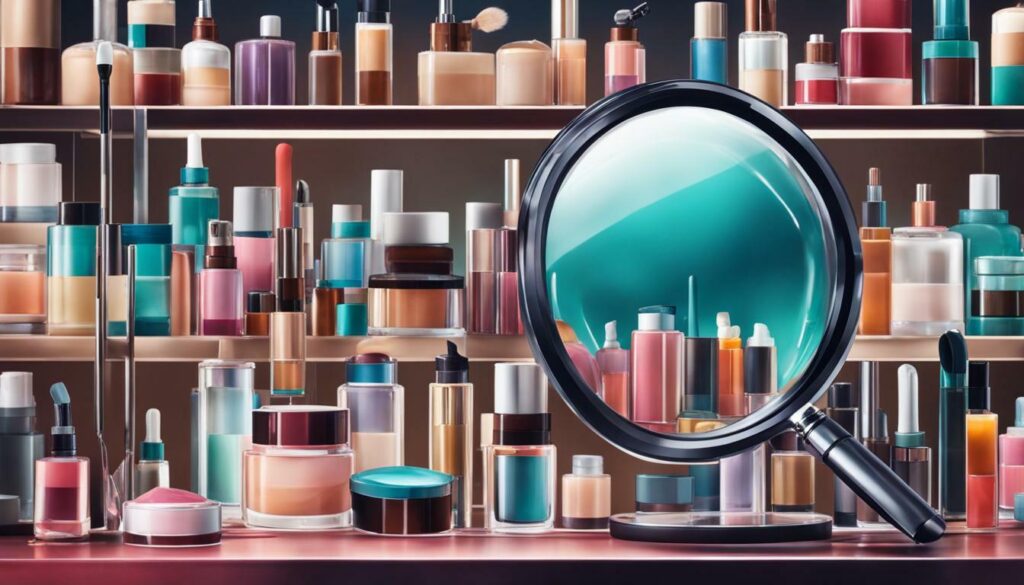
“Consumers deserve to have access to safe and effective cosmetic products. The CPSP process plays a vital role in ensuring that cosmetic companies meet this standard.”
Alternatives to Animal Testing in Cosmetics
The use of animals in cosmetics testing has been a longstanding ethical concern, with organizations and consumers alike pushing for cruelty-free alternatives. Fortunately, advancements in technology and testing methods have allowed for the development of non-animal testing options.
One such alternative is in vitro testing, which involves testing cosmetic ingredients on cells or tissue cultures grown in a laboratory setting. This method can provide valuable information on the safety and efficacy of cosmetic ingredients without the need for animal testing.
Another option is the use of computer modeling and simulations to predict the behavior of cosmetic ingredients. These methods can provide accurate and reliable results without causing harm to animals, making them a valuable testing option.
Overall, the development and utilization of non-animal testing methods are crucial in promoting the ethical and humane use of cosmetics testing. By exploring and implementing these alternatives, the cosmetics industry can continue to innovate while prioritizing animal welfare and consumer safety.
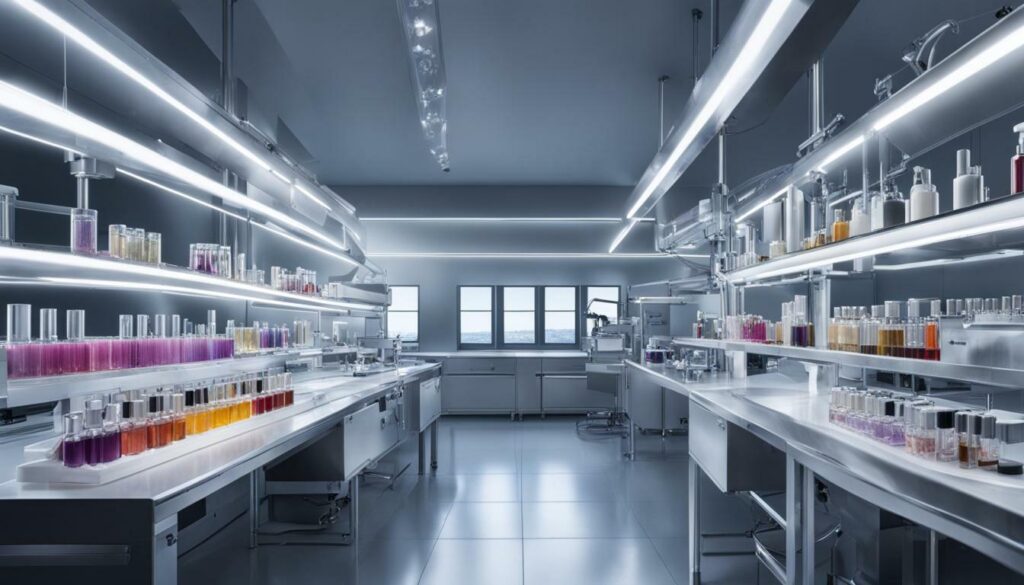
Regulatory requirements play a crucial role in ensuring the safety and quality of cosmetics products. Manufacturers must adhere to strict regulations set forth by government agencies to ensure that their products meet the required standards of safety and efficacy. Failure to comply with these regulations can result in serious consequences, including fines and legal action.
The regulatory requirements for cosmetics testing vary by country and can be complex and extensive. In the United States, the Food and Drug Administration (FDA) regulates cosmetics under the Federal Food, Drug, and Cosmetic Act (FD&C Act) and the Fair Packaging and Labeling Act (FPLA). These acts are designed to ensure that cosmetics are safe for use, properly labeled, and not misbranded.
One of the FDA’s requirements is that cosmetics manufacturers conduct appropriate testing to ensure the safety of their products. The testing must be conducted on both the raw materials and the finished product. The FDA also provides guidelines for testing methods and acceptable levels of impurities or contaminants.
Other countries have their own regulations for cosmetics testing. The European Union (EU) requires that cosmetics manufacturers comply with the Cosmetics Regulation 1223/2009. This regulation sets out specific requirements for labeling, safety testing, and the use of certain ingredients.
It is essential for cosmetics manufacturers to keep up-to-date on the latest regulatory requirements and comply with them. Failure to do so can lead to serious consequences, including product recalls and harm to consumers.
Complying with regulatory requirements is not only important for the safety and well-being of consumers but also for the reputation and success of cosmetics companies. By prioritizing compliance, manufacturers can build trust with consumers and ensure their products are of the highest quality.

In summary, regulatory requirements for cosmetics testing are critical for ensuring the safety and quality of cosmetic products. Cosmetics manufacturers must adhere to these regulations to maintain consumer trust and business success.
Exploring In Vitro Testing for Cosmetics
Cosmetics testing plays a critical role in ensuring the safety and efficacy of beauty products. In vitro testing methods, such as cosmetic ingredient testing and non-animal testing methods, have become increasingly essential in cosmetics research and development. These methods allow for the evaluation of the safety and efficacy of cosmetic ingredients without harming animals, providing an ethical and effective alternative.
One of the most significant benefits of in vitro testing is that it allows for the examination of specific cellular and molecular interactions, providing greater accuracy in evaluating ingredient safety. These tests can also help identify potential risks and toxicities associated with cosmetic products, enabling researchers to develop safer and more efficient formulas.
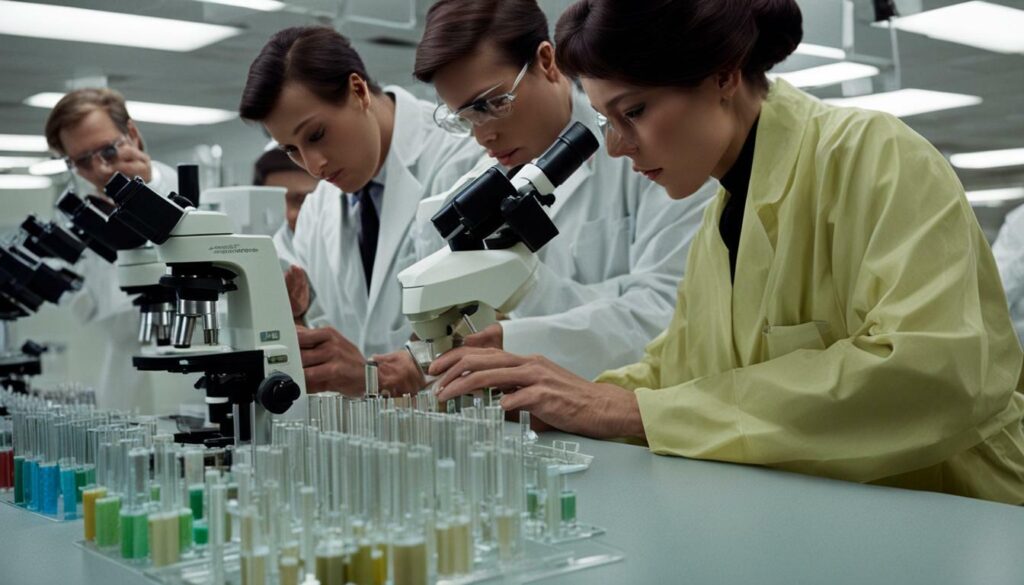
Moreover, in vitro testing allows for greater flexibility and efficiency, reducing the time and resources required to develop and test cosmetic products. In vitro testing is also more cost-effective than animal testing, making it an ideal solution for smaller companies and startups.
There are several non-animal in vitro testing methods available, including reconstructed human skin models, gene expression profiling, and 3D cell culture systems. These methods provide a more accurate representation of human skin and can help evaluate the efficacy of cosmetic products in various skin types and conditions. Additionally, the use of in vitro models allows for greater customization and personalization of cosmetic products.
Overall, in vitro testing for cosmetics has become a crucial tool in ensuring the safety and efficacy of beauty products. By utilizing these advanced testing methods, researchers can continue to innovate while prioritizing ethical and responsible practices.
How Can Cosmetic Business Solutions Help Ensure the Success of Cosmetic Testing?
Cosmetic business solutions play a crucial role in achieving success in cosmetics, especially when it comes to cosmetic testing. These solutions provide the necessary tools and expertise to ensure that cosmetic products meet the highest industry standards. By employing innovative technologies and regulatory knowledge, cosmetic business solutions help companies navigate the complexities of safety assessments, quality control, and regulatory compliance. With their assistance, cosmetic brands can confidently bring safe and effective products to market, ultimately ensuring trust among consumers and long-term success in the competitive cosmetics industry.
How Does ISO 22716 Compliance Affect the Cosmetics Testing Process?
ISO 22716 compliance has a significant impact on the cosmetics testing process. This standard specifically focuses on Good Manufacturing Practices (GMP) for cosmetic products. By ensuring adherence to these regulations, the cosmetic industry affected by 22716 receives several benefits. These include enhanced safety, improved product quality, and increased consumer trust. Implementing ISO 22716 guidelines enhances the overall efficiency and credibility of the cosmetics testing process.
Is Cosmetics Testing Necessary in the Formulation Process?
Cosmetics formulation experts play a crucial role in determining whether cosmetics testing is necessary in the formulation process. Their deep understanding of the ingredients, product safety, and regulatory requirements enables them to make informed decisions. With their expertise, they assess the need for testing, considering factors like potential risks, product effectiveness, and consumer satisfaction. Ultimately, cosmetics formulation experts contribute to ensuring the overall safety, quality, and efficacy of cosmetic products.
Why Is the CPSR Considered Essential for Cosmetics Testing?
The CPSR, or Cosmetic Product Safety Report, is deemed crucial for cosmetics testing. This report verifies the safety of a cosmetic product by evaluating its ingredients, their concentrations, and potential risks. By conducting thorough assessments, these cosmetic safety report details provide valuable information to manufacturers, ensuring the protection and well-being of consumers.
What Is Involved in Dermatological Testing for Cosmetics?
Dermatological testing for cosmetics involves a comprehensive cosmetics safety assessment to ensure consumer protection. This assessment includes evaluating potential skin irritation, allergic reactions, and other adverse effects caused by the product. Various in vitro and in vivo methods are utilized to accurately assess the safety and efficacy of cosmetic formulations.
Are Pet Test Cosmetics Harmful to Animals?
Many people are questioning the ethics of using pet test cosmetics. Animal testing for beauty products has raised concerns worldwide. Fortunately, there are cruelty-free alternatives for pet test cosmetics. By opting for these products, we can support the well-being of animals while enjoying our favorite beauty routines.
What is the Purpose of the Cosmetics Challenge Test ISO 11930?
The cosmetics challenge test, as defined by the ISO 11930 standard, serves a crucial purpose in evaluating the effectiveness of preservatives in cosmetic products. This test determines the ability of the product to resist microbial growth when exposed to different microorganisms. By subjecting cosmetics to this challenge test, manufacturers can ensure the safety and quality of their products for consumer use.
The Importance of Toxicology Testing in Cosmetics
One of the crucial aspects of cosmetics testing is ensuring the safety of cosmetic products for consumers. Toxicology testing plays a significant role in this process, as it helps evaluate the potential risks associated with cosmetics.
Through toxicology testing, researchers can determine the dosage levels of cosmetic ingredients that are safe for humans to use. This is especially important in cases where certain chemicals or compounds may have harmful effects on the skin, such as allergic reactions or skin irritation.
Toxicology testing involves applying cosmetics to animal or human skin and observing the results. This type of testing helps evaluate the safety of cosmetic ingredients, including their potential to cause irritation, sensitization, or other adverse reactions. Additionally, toxicology testing can help identify potential hazards associated with long-term exposure to cosmetic products.
It is important to note that while animal testing has been a widely used method for toxicology testing in the past, there has been a growing concern for animal welfare. As a result, alternative testing methods have been developed to replace animal testing. In vitro (non-animal) testing methods, such as reconstructed human skin models and computer modelling, have been shown to be effective in evaluating the safety of cosmetic ingredients. These methods can provide results that are comparable to animal testing while avoiding the unnecessary harm to animals.
Toxicology testing is a critical part of cosmetics testing, and it is essential that safety assessments are conducted for every cosmetic product before it is released to the market. By utilizing advanced testing methods and continuously exploring alternative testing methods, cosmetics companies can ensure the safety of their products and maintain the trust of their consumers.
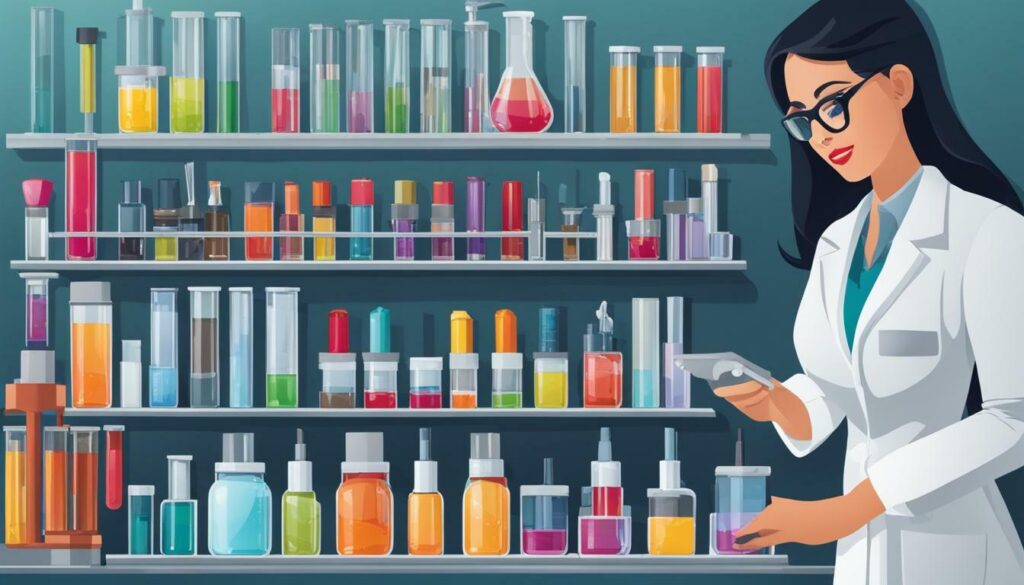
From the importance of cosmetics testing to the significance of adhering to regulatory requirements, beauty product manufacturers must prioritize the safety, quality, and efficacy of their products. Through a combination of Good Manufacturing Practices (GMP), stability testing, microbiological testing, and toxicology testing, among others, cosmetics companies can ensure that their products meet industry standards and satisfy consumer demand.
As the cosmetics industry continues to evolve, so too must its testing methods. Advancements in cosmetic engineering and innovative non-animal testing methods offer exciting possibilities for the future of cosmetic product development. By embracing these alternatives, companies can continue to innovate while maintaining their commitment to consumer safety and ethical standards.
Fostering Trust through Cosmetics Testing
Investing in cosmetics testing is not only essential for ensuring product safety and efficacy but also for fostering consumer trust. By conducting rigorous testing and adhering to regulatory requirements, companies can demonstrate their commitment to quality and transparency, building long-lasting relationships with their customers.
In today’s competitive beauty market, investing in comprehensive cosmetics testing is no longer optional. It is imperative for companies that want to establish themselves as industry leaders and gain the loyalty of their customers. By prioritizing safety, quality, and efficacy, cosmetics manufacturers can continue to innovate and grow while meeting consumers’ needs.
